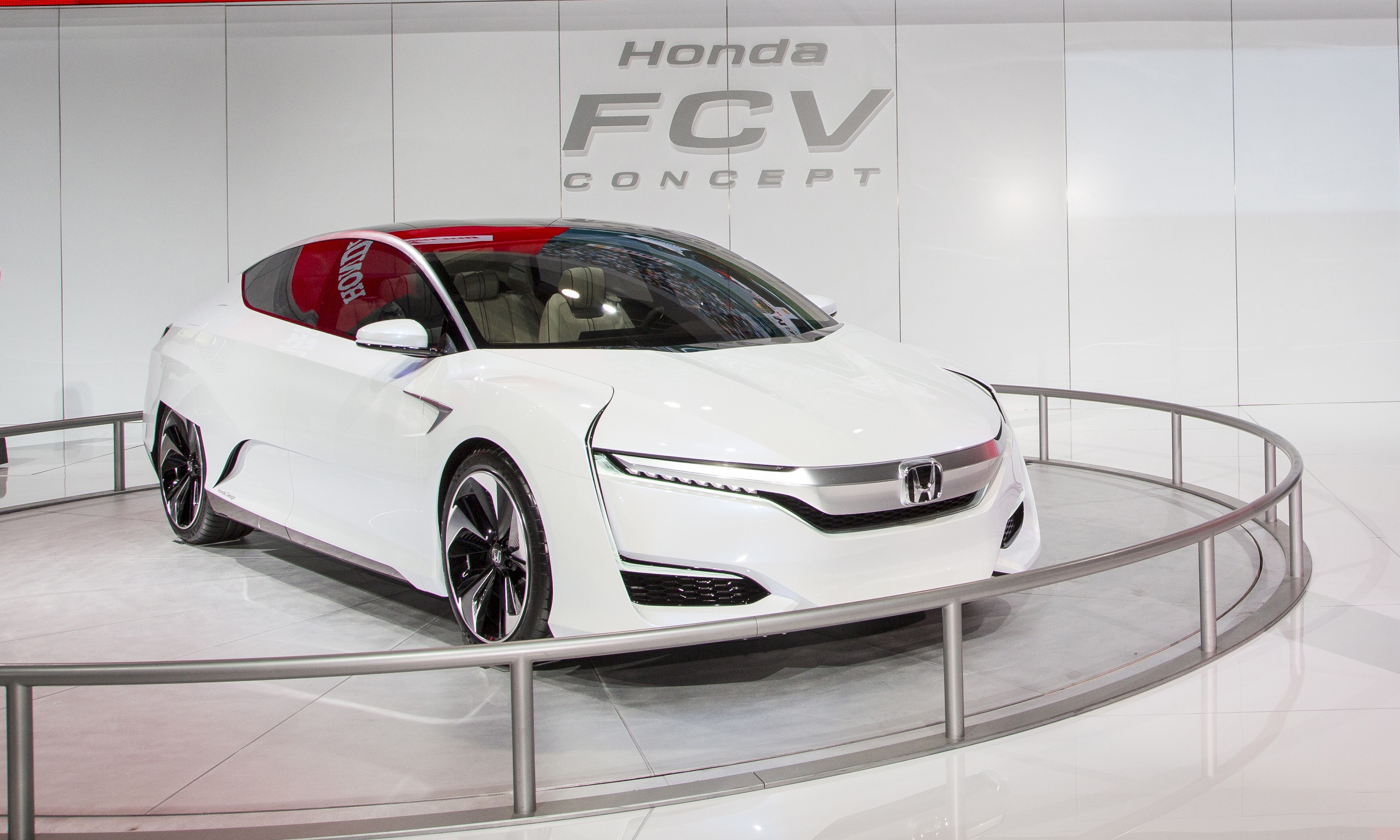
- New battery-electric vehicle and new plug-in hybrid model by 2018 and further application of two- and three-motor hybrid systems, to join Honda’s U.S. lineup enabling Honda to continue to be a strong competitor in the alternative-fuels vehicle market
- Together, these vehicles will offer significant volume enabling Honda to bring ultra-low carbon transportation to consumers in the U.S.
- Honda FCV Concept demonstrates the styling evolution of the next-generation Honda fuel-cell vehicle, launching in 2016
- New VTEC® Turbo engines to be built in Ohio, will launch in 2015
Jan 13, 2015 – DETROIT — The Honda FCV Concept makes its North American debut at the 2015 North American International Auto Show with U.S. availability of the production vehicle in 2016. In an effort to ensure Honda’s environmental vehicles remain strong competitors and provide a new sales-volume pillar, the company will offer several next-generation, advanced powertrain vehicles, including a new battery-electric model and plug-in hybrid model by 2018. Additionally, the company plans further application of its two- and three-motor hybrid systems in the years to come. Together, these vehicles will offer significant volume enabling Honda to bring ultra-low carbon transportation to consumers in the U.S. Honda also announced plans to introduce new VTEC® Turbo engines to be built in Ohio and debut later in 2015.
Honda FCV Concept
The Honda FCV Concept showcases the styling evolution of Honda’s next fuel-cell vehicle, anticipated to launch in the U.S. following its March 2016 introduction in Japan. The new Honda fuel-cell car will feature a spacious cabin with seating for five-passengers, a driving range estimated to be in excess of 300 miles, and an anticipated refueling time of approximately 3 minutes at a pressure of 70 MPa. Its fuel cell stack, which fits entirely within under the hood, is 33 percent smaller with a 60 percent increase in power density compared to the outgoing Honda FCX Clarity.
As the next progression in Honda’s dynamic FCV styling, the Honda FCV Concept features a low, wide aerodynamic body with clean character lines. The interior strives to achieve harmony between man and machine by taking advantage of new powertrain packaging efficiencies delivering even greater passenger space than its predecessor, the 4-passenger Honda FCX Clarity fuel-cell vehicle. The Honda FCV Concept made its world debut in Japan on Nov. 17, 2014, followed by an announcement at the Los Angeles Auto Show that Honda will provide FirstElement Fuel with $13.8 million in financial assistance to build additional hydrogen refueling stations throughout the state of California in an effort to support the wider introduction of fuel-cell vehicles.
Next-Generation Advanced Powertrain Vehicle
In addition to the all-new fuel-cell vehicle, by 2018 Honda will introduce several next-generation advanced powertrain vehicles that will leverage new Honda Earth Dreams™ Technology powertrains. These next-generation vehicles will build on Honda’s longstanding portfolio approach to advancing ultra-low carbon technologies for mobility and will include:
- An all-new Honda plug-in hybrid model (PHEV);
- An all-new Honda battery-electric vehicle (BEV); and
- Further application of our two- and three-motor hybrid systems to contribute to significant sales volume growth for Honda’s U.S. hybrid vehicle lineup.
New VTEC® Turbo Engines
Before the end of the year, Honda will begin to introduce our new 4-cylinder VTEC® Turbo engines – an extension of its Earth Dreams™ Technology powertrain lineup – that will deliver fun-to-drive performance while supporting fuel efficiency at a very high level. Production of the new VTEC® Turbo engines will begin later this year at Honda’s Anna, Ohio, engine plant, the largest automobile engine plant in Honda’s global production network1. Honda is investing $340 million at the Anna Engine Plant to produce the VTEC® Turbo 4-cylinder engines using domestic and globally sourced parts, including the addition of a third assembly line for production of 4-cylinder engines and additional manufacturing innovations.
Honda Environmental Leadership
Based on its vision of “Blue Skies for our Children,” Honda is taking a portfolio approach to reducing the environmental impact of its products, advancing fuel efficiency, low emissions and fun-to-drive performance with new powertrain technologies from its Earth Dreams Technology™ lineup, which includes more fuel-efficient engines and transmissions and advanced electromotive technologies. Honda’s alternative-fuel vehicle lineup includes the Fit EV, Civic Hybrid, Civic Natural Gas, the CR-Z sport hybrid coupe and the Accord Hybrid.
1 Honda engines are built using domestic and globally sourced parts.
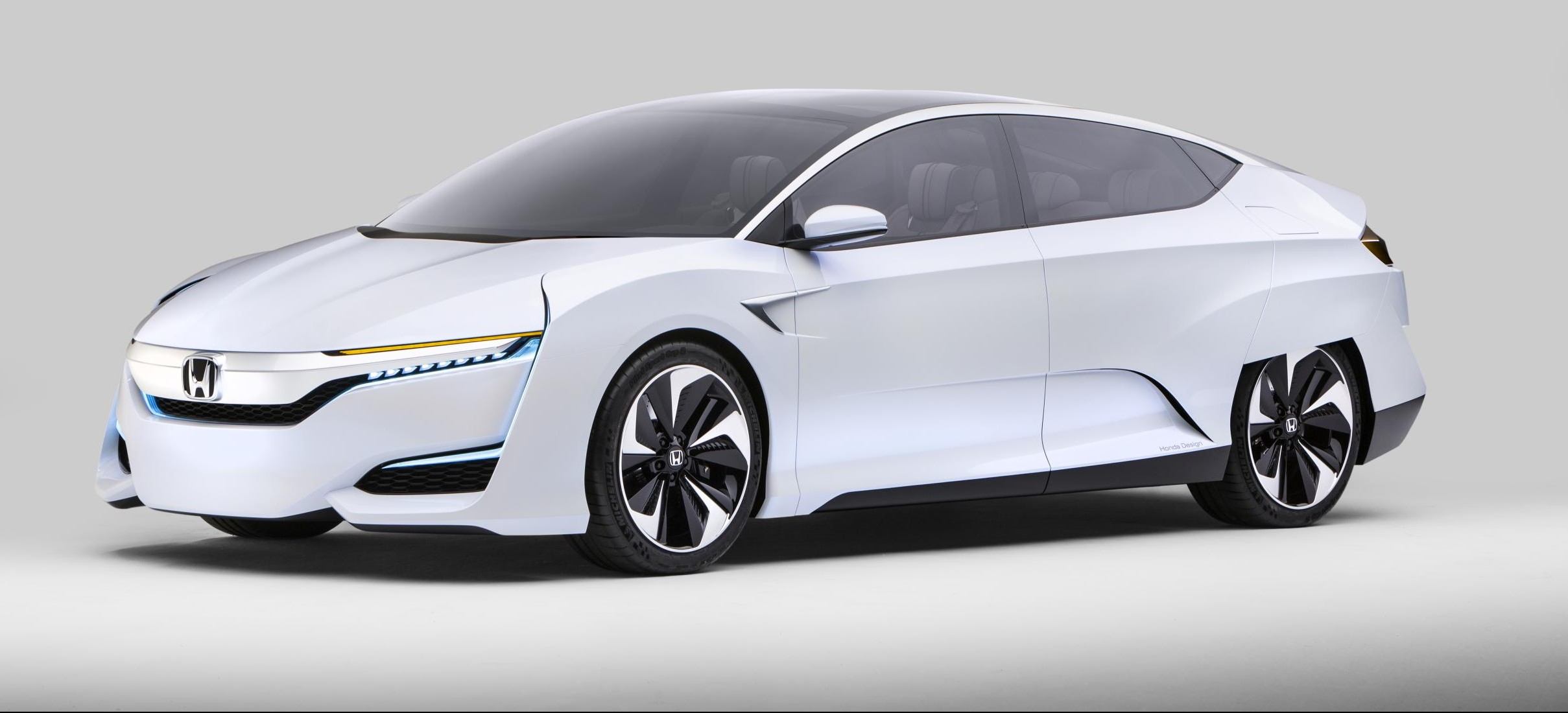
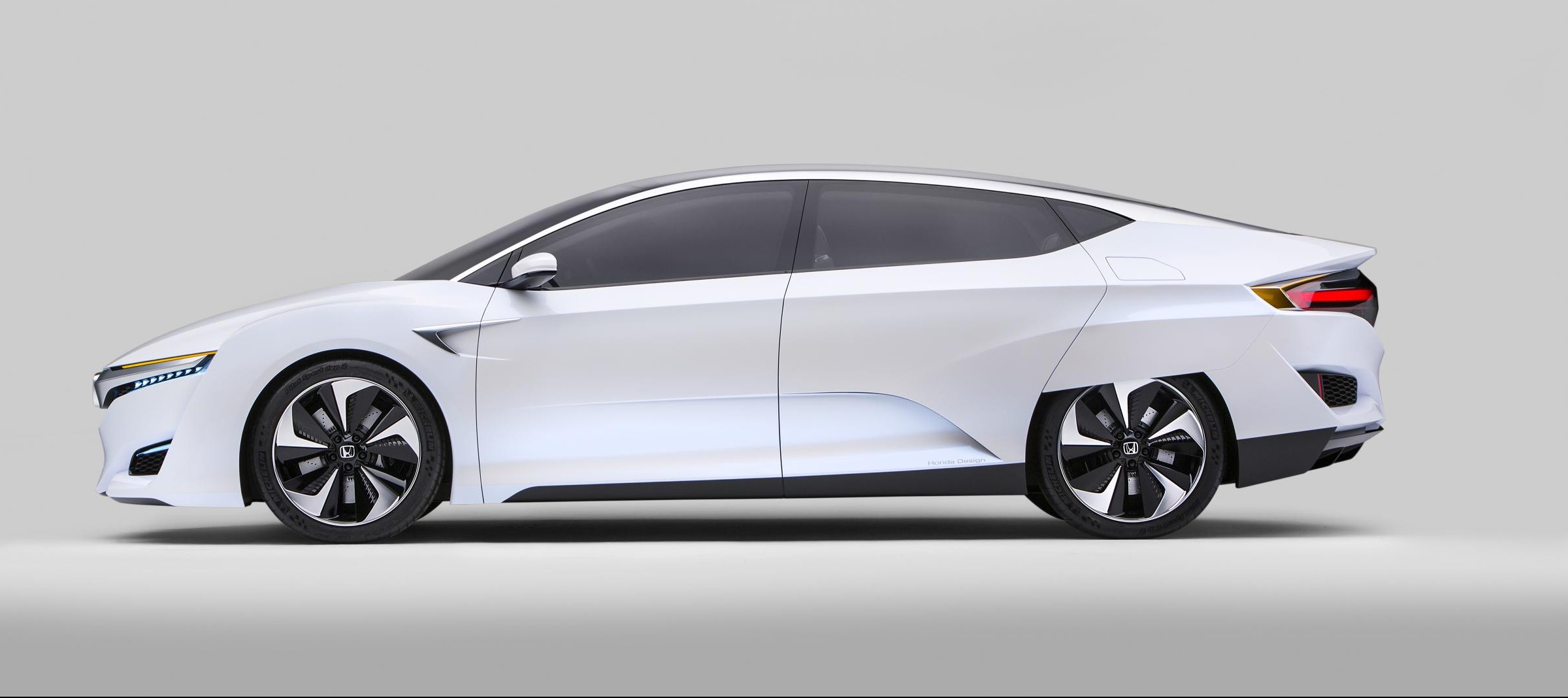

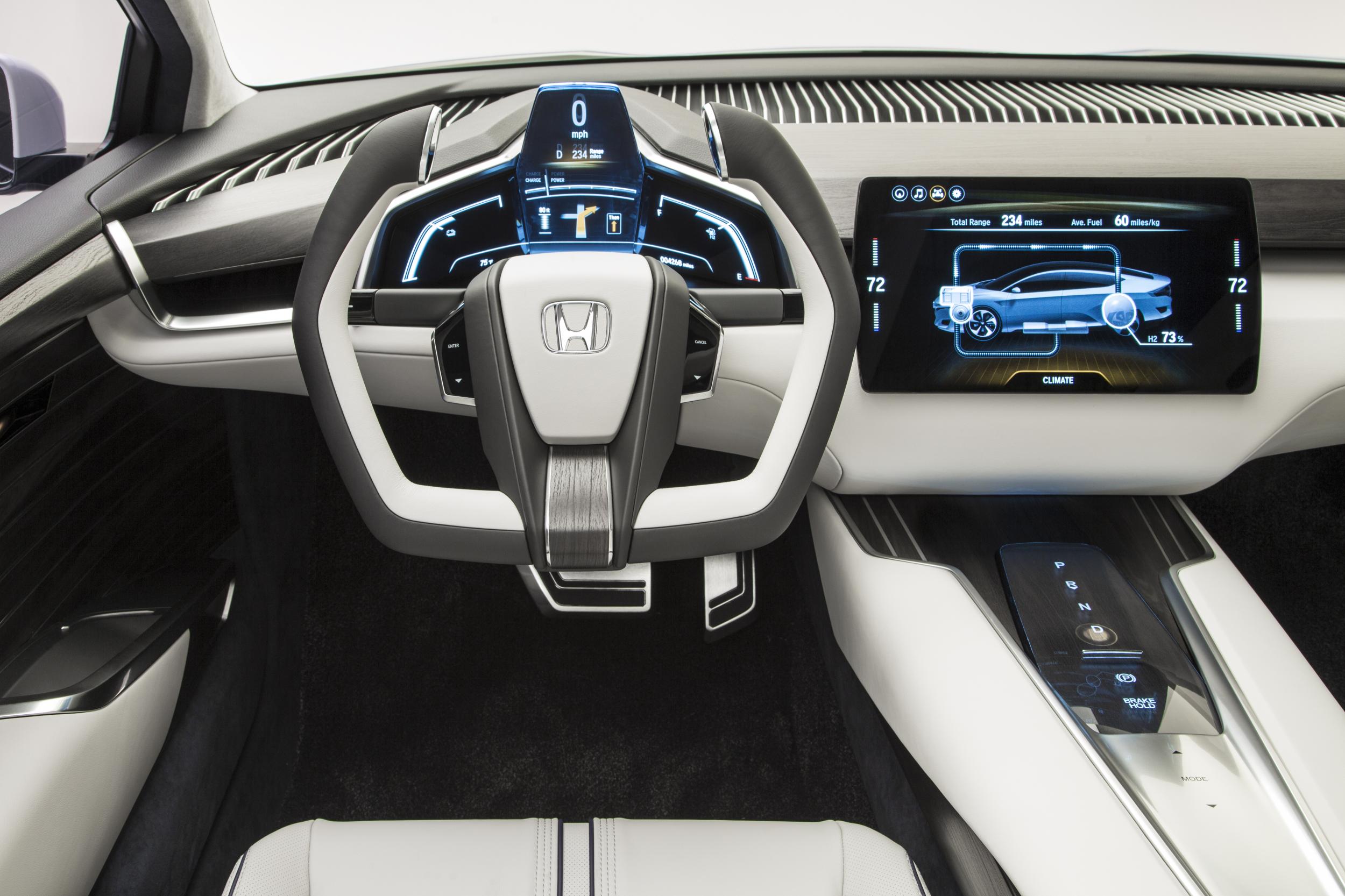
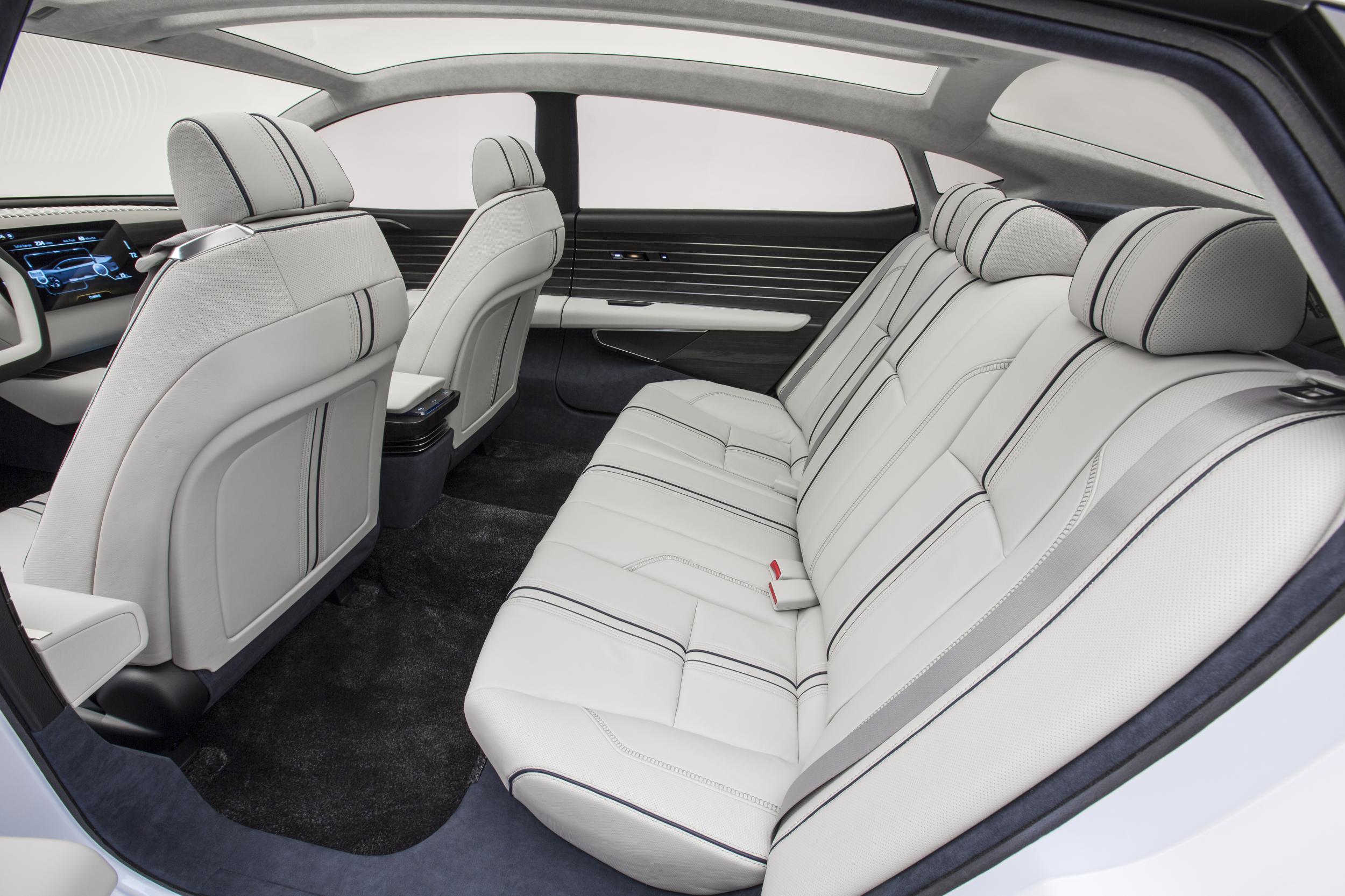

Honda Press Event – 2015 North American International Auto Show Show Remarks
John Mendel:
Hello everyone. And thank you for joining Honda this morning. I know there are a few press conferences still to come, but we are pleased to bring down the curtain on the OEM side of the 2015 North American International Auto Show.
Over the past day and a half you’ve probably attended more than 25 press events here in Cobo Center, but not one has showcased the diverse array of advanced products you see here on the Honda Stage this morning.
These products and many more still to come are why we’re calling 2015 “The Year of Honda.” Over the next 12-18 months, you’re going to see multiple big Honda dreams come true, the new Acura supercar you saw yesterday, a next-generation Honda fuel cell vehicle, an incredibly innovative business jet and our return to Formula One racing. No other automaker in the world has the depth of R&D know-how and experience to take on all of these challenges, let alone bring them to market.
These are all-new products and technologies for our customers and for the future of mobility everywhere, innovations that are truly something only Honda can deliver. As you can see here, and across the aisle, we’re bringing to life our mantra, “The Power of Dreams”, in very real and compelling ways.
Our springboard is the incredible momentum we created in 2014, with all-time record sales for the Honda brand. In addition to selling the most Honda vehicles in the 45 years since we began automobile sales in America, what makes it especially satisfying is that we continue to do it the Honda way. That means without compromising our commitment to our customers.
The record number of customer relationships we created last year was based almost exclusively on sales to individual buyers, earned one customer and one vehicle at a time. Accord, again, was the most popular car in America with retail car buyers. Civic, again, was the best-selling compact car with retail buyers. And CR-V, again, was the outright best-selling SUV in America; in fact, it’s been the best-selling SUV in America for the past decade.
For the second straight year, these three models topped over a million units in sales. And, full-size trucks notwithstanding, this is another achievement that only Honda has accomplished.
But when we talk about “Only Honda” and The Power of Dreams in 2015, we’re talking the fulfillment of some really big dreams. We’re tapping into the roots of Honda’s passion for innovation in mobility powered by a technological tour-de-force unrivaled in the global auto industry.
We can start with the all-new NSX, and while you heard plenty about this new supercar yesterday, the NSX demonstrates our passion for engineering expertise and broad based experience in powertrain innovation, hybrid systems, super-handling technology and advanced body construction, just to name a few.
And today, we showcase these very same strengths, but in a different type of advanced technology vehicle, the Honda FCV Concept. Making its North American debut, this fuel cell vehicle represents Honda’s more than 25 years of expertise in the development of fuel cell technology.
The new, more compact Honda fuel cell stack fits completely within the front engine compartment. This is a significant achievement for the future application of fuel-cell technology in our industry. The new stack provides a 60 percent boost in power and a 33 percent reduction in size.
As a result, the FCV Concept delivers even greater passenger space than its predecessor, including seating for up to five.
Moreover, the FCV Concept has a driving range of more than 300 miles and an anticipated refueling time of approximately 3 minutes at a pressure of 70 MPa, which is significantly faster than battery recharging.
We all know that infrastructure is a major concern. So, we also recently invested nearly $14 million dollars in First Element Fuel to further accelerate the network of public hydrogen refueling stations in California. This commitment adds considerable momentum to the future infrastructure for fuel cell vehicles.
Importantly, the FCV Concept we will launch in 2016 serves as the first of an entire new generation of Honda’s future advanced technology vehicles. And today in Detroit, we’re announcing that we will introduce an all-new battery electric model, and an all-new plug-in hybrid model by 2018.
Together, these vehicles will help create a new volume sales pillar by meeting a variety of customer needs for mobility.
So, while the FCV Concept and NSX may be at opposite ends of the technology spectrum, they’re both emblematic of our passion for technology and innovation that benefits the customer and society.
This same challenging spirit and passion will be expressed in another Honda dream that has been decades in the making, and that will literally take Honda power to the skies. This year, Honda Aircraft Company will begin customer deliveries of the highly anticipated HondaJet, seen here in quarter-scale.
A pure expression of our commitment to innovation in human mobility, the most significant of HondaJet’s many breakthroughs is the unique Over-The-Wing Engine Mount configuration. Engineered and proven by Honda after more than 20 years of extensive research and development, this design helps make HondaJet the fastest, highest flying, and most fuel-efficient aircraft in its class.
And don’t let this scale model version fool you. It’s not a concept, it’s just that while there have been longhorns on Jefferson Avenue, we couldn’t land the plane there. The fact is we’re already mass-producing HondaJet, even as we enter the final phase of FAA approval.
Sixty-six years ago Honda’s first motorbike was powered by a half-horsepower 50cc engine. The HondaJet is equipped with the most powerful engine Honda has ever produced, the Honda-designed GE Honda HF120 turbofan, rated in excess of 2,000 pounds of thrust.
And since we’re here at the Detroit Auto Show, I’ll point out that the HondaJet is likely the first business aircraft to fully utilize automobile interior design processes, improving quality and efficiency in mass production.
And, like 98-percent of our automotive products, both the HondaJet and its turbofan engine are built in North America; in fact, both are built in the birthplace of human flight, North Carolina.
Now, if innovation is the heart of Honda, racing is its soul. And 2015 will see one more major dream realized, and an expression of the Honda Racing Spirit with our return to Formula One racing.
On stage today is a fully operational, exact replica of the F1 car Richie Ginther drove to Honda’s first 1st Grand Prix victory in 1965. 2015 marks the 50th anniversary year of that first F1 checkered flag, a win that occurred in North America, in the Mexican Grand Prix. Now, in that video, it was long-time Honda IndyCar driver and 3-time Indy 500 champion Dario Franchitti behind the wheel. And Dario is with us here today. Thanks Dario, for all you do to advance Honda’s Racing Spirit, and for remaining a true friend of Honda.
In the upcoming 4th era of Honda’s F1 history, McLaren and Honda have reignited a partnership that earned an incredible eight world championships, including the most dominating single season performance in F1 history.
We have a couple of great drivers and proven champions as part of the McLaren Honda team in Fernando Alonso and Jenson Button, and we will compete to win in this inaugural season.
Honda broke new ground in the 1980s by creating a turbocharged engine that was unparalleled in both output and efficiency. F1 engines have been downsized to 1.6 liters and paired with energy recovery systems, similar to those on conventional hybrid and electric cars.
Honda engineers are leveraging our considerable experience with electric drive and energy recovery systems in our production vehicles to develop this F1 power unit. And in the future, the technologies developed through F1 will be fed back to production cars.
Let’s not forget motorcycle, MotoGP is the world’s top racing series. And Honda won consecutive championships in 2013 and 2014 with the Honda RC213V ridden by Marc Marquez who dominated MotoGP last season winning 13 of 18 races. Last year, Marquez introduced an incredible prototype street version of the RC213V championship machine at the Milano Motorcycle show. It’s another example of a Honda dream come true, and this RC213V-S Prototype is set to become the ultimate street bike.
To those of you not attuned to MotoGP racing, that would be like a street legal F1 car.
So, what do all of these new Honda dreams have to do with our automobile business? It’s about spirit, the spirit of innovation that’s powering a strong cadence of innovative products heading your way in the coming months, with the revitalization of our light truck lineup, a major expansion of alternative powertrain vehicle sales, and the further growth of our small car lineup.
This includes the all-new 2016 Honda HR-V crossover this spring, a new benchmark in a growing segment. Shortly after, we’ll introduce an all-new Pilot SUV that will redefine what is possible with an 8-passenger mid-size SUV. And further ahead, a completely reengineered Ridgeline pickup. And we have some more excitement on the passenger car side of our lineup this year as well. So, watch this space.
All this happens as we continue to rollout our new generation of powertrains that are developed and manufactured here in North America. And again, today, we’re announcing our first application of the new Honda VTEC® turbo 4-cylinder engines, and that they will be made at our Anna Engine Plant in Ohio.
We will also expand application of our 2- and 3-motor hybrid systems. It is all of these new products and powertrains that will serve to strengthen our competitiveness in key growth areas.
All of these new products and technologies are among the reasons we’re calling 2015 the “Year of Honda.” It’s going to be an exciting and groundbreaking year. And we’re targeting not just a record year for the Honda brand, but an all-time mark for total American Honda sales, all accomplished while maintaining our focus on individual buyers. And we look forward to having you along for the ride.
And speaking of rides, we’re going to close out with one more technology that only Honda could create. Developed as a personal mobility device that’s compatible for use around people, this UNI-CUB features balance control and other technologies, which originate from Honda’s robotics research.
These technologies allow the rider to move forward, backward, side-to-side and diagonally as freely as walking, simply by shifting body weight and leaning toward the intended direction.
While I currently exceed the GVW of this particular model, I’ve been assured they’re working on a Mendel-sized version. But you might have seen this unique expression of Honda’s robotics expertise in a music video released several months ago by the rock group OK Go.
So, we thank you for joining us, we look forward to sharing this Year of Honda with all you, and now let’s OK Go!
